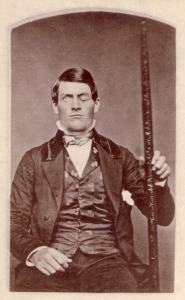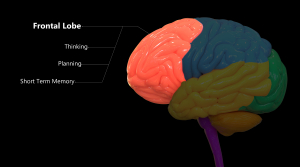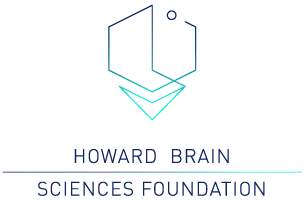The wonders of day to day brain functions are not to be taken lightly. Amongst other functions, daily brain function includes prioritizing information from the five senses, managing autonomic systems, and maintaining working memory. While this is already impressive, the brain is also capable of healing itself and undergoing significant functional and structural change (Kolb & Whishaw, 1998). While incidents such as traumatic brain injuries (TBIs) are life-altering, the case of Phineas Gage illustrates how the brain can continue to function despite a severe injury.
 Phineas Gage was an American railroad foreman, known for surviving an iron bar passing through the left side of his skull (Thiebaut de Schotten et al., 2015). The bar entered through the bottom side of his skull while blasting rock. The tamping iron had a thirty two millimeter diameter, one and a tenth meters length, and a weight of six kilograms. He was treated by Dr. John Harlow. Harlow removed several bone fragments and approximately an ounce of Gage’s brain, replaced some of the bone, and closed the wound only partially to allow it to drain (Harlow, 1868). Gage was in good spirits regarding his recovery that evening, but twelve days after his injury he became semi-comatose (Harlow, 1868). Harlow noted and treated a cerebral abscess that Gage had developed (Harlow 1868). Within another twelve days Gage began to show greater signs of recovery, though it would be an additional five weeks until he was strong enough to return to his parent’s home in New Hampshire (Harlow, 1868). Over the course of his treatment, friends and Harlow alike were greatly impressed by his recovery, his survival considered miraculous by all medical standards at the time (Harlow, 1868).
Phineas Gage was an American railroad foreman, known for surviving an iron bar passing through the left side of his skull (Thiebaut de Schotten et al., 2015). The bar entered through the bottom side of his skull while blasting rock. The tamping iron had a thirty two millimeter diameter, one and a tenth meters length, and a weight of six kilograms. He was treated by Dr. John Harlow. Harlow removed several bone fragments and approximately an ounce of Gage’s brain, replaced some of the bone, and closed the wound only partially to allow it to drain (Harlow, 1868). Gage was in good spirits regarding his recovery that evening, but twelve days after his injury he became semi-comatose (Harlow, 1868). Harlow noted and treated a cerebral abscess that Gage had developed (Harlow 1868). Within another twelve days Gage began to show greater signs of recovery, though it would be an additional five weeks until he was strong enough to return to his parent’s home in New Hampshire (Harlow, 1868). Over the course of his treatment, friends and Harlow alike were greatly impressed by his recovery, his survival considered miraculous by all medical standards at the time (Harlow, 1868).
Despite his physical recovery, friends, family and Harlow noted several changes in Gage’s behavior. Harlow described changes in his personality such as “fitful, irreverent, indulging at times in the grossest profanities (which was not previously his custom), manifesting little deference for his fellows, impatient of restraint or advice when it conflicts with his desires” (Harlow, 1868). This is paired with the oft-quoted observation, he had become “no longer Gage” (Harlow, 1868). Though no psychological assessments of Gage exist, experts propose, “Harlow argued that the behavioral changes in Gage’s personality were the direct result of the damage to the left frontal lobe” and experts propose these changes “[result] from deficits in rational decision-making and emotion processing” (Thiebaut de Schotten et al., 2015). How radical these changes were has been debated as this is based on individual reports and is not independently documented (Macmillian, 2009; Kendra, 2019). Later in life, Gage was also said to make a partial psychosocial recovery, working in both Chile and America, and touring with the story of his survival (Macmillian & Lena, 2010). Gage’s health only truly began to fail in 1859, growing ill and dying in 1860 (Macmillian & Lena, 2010).
Early explanations of Gage’s changed behavior rely on single-process explanations, parts of the brain relating to a single type of function (Macmillian & Lena, 2010). This varies from the modern conception of the brain as a series of interconnected systems (Macmillian & Lena, 2010).
 Modern computed tomography (CT) scans based off Gage’s skull reveal, “the bar entered under the left zygomatic bone and passed through the greater and lesser wings of the sphenoid bone, creating the hole we observed near the midline of the skull in the left frontal bone” (Thiebaut de Schotten et al., 2015). Further analysis of his injury “ [indicates] direct damage to the orbitofrontal cortex, dorsolateral prefrontal cortex, and temporopolar cortex,” as well as “disconnected several areas not directly affected by the tamping iron” (Thiebaut de Schotten et al., 2015). These areas include “the frontal pole, posterior inferolateral frontal cortex, anterior and posterior cingulate, pre-supplementary motor area, precuneus, posterior temporal, and dorsolateral occipital cortices” (Thiebaut de Schotten et al., 2015). Lastly, “other subcortical structures that were partially disconnected from the frontal lobe were the thalamus, the striatum, and amygdala” (Thiebaut de Schotten et al., 2015). The areas and systems affected relate to “decision-making, emotion processing, and reward tasks,” confirming the story of his initial outbursts, behavioral shifts, and difficulty with decision making (Thiebaut de Schotten et al., 2015). While Phineas Gage’s accident and survival has largely caught the public eye there are several other interesting cases of both survival and drastic change to the brain.
Modern computed tomography (CT) scans based off Gage’s skull reveal, “the bar entered under the left zygomatic bone and passed through the greater and lesser wings of the sphenoid bone, creating the hole we observed near the midline of the skull in the left frontal bone” (Thiebaut de Schotten et al., 2015). Further analysis of his injury “ [indicates] direct damage to the orbitofrontal cortex, dorsolateral prefrontal cortex, and temporopolar cortex,” as well as “disconnected several areas not directly affected by the tamping iron” (Thiebaut de Schotten et al., 2015). These areas include “the frontal pole, posterior inferolateral frontal cortex, anterior and posterior cingulate, pre-supplementary motor area, precuneus, posterior temporal, and dorsolateral occipital cortices” (Thiebaut de Schotten et al., 2015). Lastly, “other subcortical structures that were partially disconnected from the frontal lobe were the thalamus, the striatum, and amygdala” (Thiebaut de Schotten et al., 2015). The areas and systems affected relate to “decision-making, emotion processing, and reward tasks,” confirming the story of his initial outbursts, behavioral shifts, and difficulty with decision making (Thiebaut de Schotten et al., 2015). While Phineas Gage’s accident and survival has largely caught the public eye there are several other interesting cases of both survival and drastic change to the brain.
Two other interesting cases are that of Henry Gustav Molaison and Louis Victor Lebornge. Henry Gustav Molaison was an American man who after a bilateral medial temporal lobectomy could no longer form new memories (Thiebaut de Schotten et al., 2015). This procedure cured his epilepsy, but “Molaison was able to maintain information online for about [thirty seconds], but his ability to convert short-term memories into long-term memories was lost” (Thiebaut de Schotten et al., 2015). Pierre Paul Broca, for whom the Broca’s area is named, worked with two patients who lost their ability to speak following damage to the frontal lobe. One of the two, Louis Victor Leborgne was thirty years old at the time of his admittance and had lost the ability to speak except for the word “tan” (Thiebaut de Schotten et al., 2015). He spent twenty one years at Bicêtre Hospital, but “eventually deteriorated,” becoming both paralyzed and bedridden for the final seven years of his life (Thiebaut de Schotten et al., 2015).
These cases were seminal to our current understanding of the brain. While our understanding of both plasticity and functional systems has advanced, there are still many points of further research such as the effects of sleep or stem cell therapy on brain healing (Wong, 2008). You can support HBSF’s research on the brain and neurodegenerative disease by donating here.
Written by Senia Hardwick
References
Kolb, B., & Whishaw, I. Q. (1998). Brain plasticity and behavior. Annual Review of Psychology, 49(1), 43–64. https://doi.org/10.1146/annurev.psych.49.1.43
Harlow J . 1868. Recovery from the passage of an iron bar through the head. Publ Mass Med Soc. 2:327–347.
Kendra, C. (2019). The famous case of phineas gage’s astonishing brain injury. Verywell Mind. https://www.verywellmind.com/phineas-gage-2795244
Macmillan, M. (2009, July). More about phineas gage. http://brightbytes.com/phineasgage/more.html
Macmillan, M., & Lena, M. L. (2010). Rehabilitating phineas gage. Neuropsychological Rehabilitation, 20(5), 641–658. https://doi.org/10.1080/09602011003760527
Thiebaut de Schotten, M., Dell’Acqua, F., Ratiu, P., Leslie, A., Howells, H., Cabanis, E., Iba-Zizen, M. T., Plaisant, O., Simmons, A., Dronkers, N. F., Corkin, S., & Catani, M. (2015). From phineas gage and monsieur leborgne to h. M.: Revisiting disconnection syndromes. Cerebral Cortex, 25(12), 4812–4827. https://doi.org/10.1093/cercor/bhv173
Wong, K. (2008). Helping the brain heal itself. Cell Stem Cell, 3.
